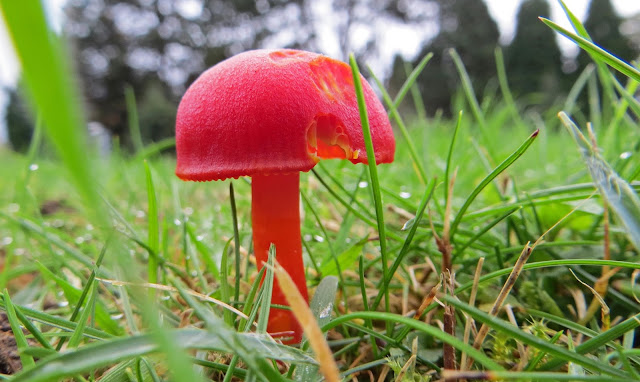Okay,
that’s not really how the 17th-century poem (‘To the Virgins, to Make Much of
Time’, by English Cavalier poet Robert Herrick) begins but, when it comes to gathering waxcaps, you really do need to seize
the day because
Old Time is still a-flying;
And this same [fungi] that smiles
today
To-morrow will be dying.
Luckily,
I have a magnificent and very abundant source of waxcaps much closer to home,
at Cathays Cemetery
I
am still very much a novice when it comes to identifying fungi – if you’ve ever
tried it, you will know what a difficult process it can be. Is the fungus slimy
or dry? Where is it growing? Is it alone or in a cluster? What is the texture
of the cap? How are the gills attached to the stem? What colour are the spores?
These are just a few of the myriad questions you must answer. It is at once frustrating,
entrancing, infuriating, captivating … and highly addictive!
I
think I know the identities of all
the waxcaps in these photographs but, just in case I’m wrong, let’s just focus on
how beautiful they are and not bother about what they’re called. Enjoy!
For more facts and an identification
guide to waxcaps in particular and fungi in general, check out the First Nature website.















No comments:
Post a Comment